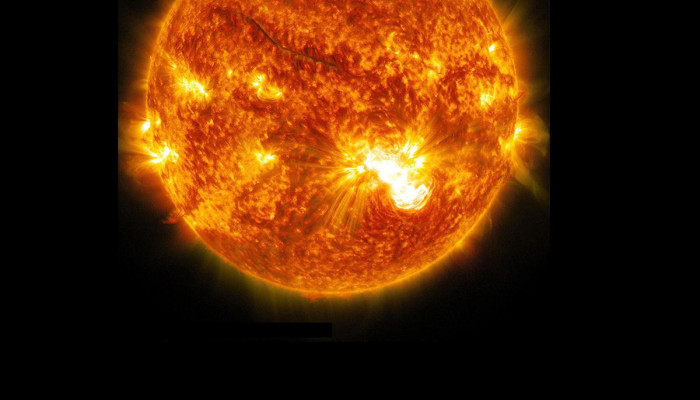Payload on board Aditya-L1 captures first X-ray glimpse of solar flares
- In Reports
- 10:59 PM, Nov 07, 2023
- Myind Staff
The High Energy L1 Orbiting X-ray Spectrometer (HEL1OS) payload, onboard the Aditya-L1 spacecraft, has captured the first high-energy X-ray glimpse of solar flares, two months after its launch, the Indian Space Research Organisation (ISRO) said on Tuesday.
In its update, ISRO on Tuesday noted that the spectrometer on board Aditya-L1 has recorded the impulsive phase of solar flares, during its first observation period from approximately October 29, 2023.
“HEL1OS captures first high-energy X-ray glimpse of solar flares during its first observation period from approximately 12:00 to 22:00 UT on October 29, 2023. The High Energy L1 Orbiting X-ray Spectrometer (HEL1OS) on board Aditya-L1 has recorded the impulsive phase of solar flares. The recorded data is consistent with the X-ray light curves provided by NOAA’s GOES,” ISRO said in a statement.
A solar flare is a sudden brightening of the solar atmosphere. Flares produce enhanced emission in all wavelengths across the electromagnetic spectrum - radio, optical, UV, soft X-rays, hard X-rays, and gamma-rays. Flare emission consists of emissions from accelerated particles and hot plasma. Though solar flares have been studied in X-rays and gamma-rays for decades, the initial impulsive emission is very difficult to characterise and understand.
The HEL1OS X-ray spectrometer, which went into commission on October 27, 2023, is presently undergoing calibration procedures and threshold fine-tuning. It has been monitoring the Sun for hard X-ray activities ever since.
"The instrument is set to monitor the sun's high-energy X-ray activity with fast timing and high-resolution spectra," ISRO wrote on its X timeline. HEL1OS data enables researchers to study explosive energy release and electron acceleration during impulsive phases of solar flares.
The plot here is the X-ray light curve detected by HEL1OS of the Solar activity during ~ 12:00 to 22:00 UT on October 29, 2023, along with GOES X-ray light curves in the same interval for comparison. The strongest event is the C6 class flare at 13:00 UT.
The short duration and early peaking time of the HEL1OS light curve, which indicates the moment at which "peak" or "maximum" X-rays in an energy range are identified, set it apart from the GOES observation as evidence of the solar flare's impulsive phase. A few impulsive events that are weak in the GOES light curve are also evident in the HEL1OS light curve. Whether or not these faint GOES occurrences include any intriguing evidence of electron acceleration will be determined by a thorough review of the HEL1OS data.
The Aditya-L1 spacecraft, the nation's first mission to study the Sun, was launched by the Indian space agency from the Sriharikota spaceport on September 2. In order to guarantee that the spaceship acquires sufficient momentum to be launched into its 125-day voyage, a series of Earth-bound manoeuvres were also carried out following the launch.
ISRO had then noted that the manoeuvre was needed to correct the trajectory evaluated after tracking the Trans-Lagrangean Point 1 Insertion (TL1I) manoeuvre performed on September 19.
So far in its journey, the spacecraft has undergone a few earth-bound manoeuvres and a Trans-Lagrangean Point 1 Insertion (TL1I) manoeuvres, all successfully. In the process, the spacecraft successfully escaped the sphere of Earth's influence.
Additionally, Aditya-L1 has started gathering scientific data. Supra-thermal and energetic ions and electrons at distances greater than 50,000 km from Earth are being measured by the STEPS (Supra Thermal and Energetic Particle Spectrometer) instrument's sensors. Scientists could examine the behaviour of particles around Earth with the help of this data.
Aditya-L1 will arrive at the L1 point in January 2024 and the satellite will spend its mission life orbiting around L1 in an irregularly shaped orbit. L1 is about 1.5 million km from the earth.
Image source: AP







Comments